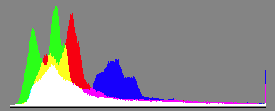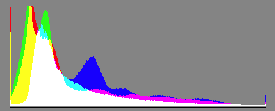marbrink said:
jlw,
Did you use the same aperture for both shots?
I honestly don't remember. I know from the EXIF data that I was using the D80 at f/1.8, but the R-D 1 doesn't record the working aperture in its EXIF data (since there's no way for it to get that info from the lens.) I was using a 50/1.5 Nokton and the light was fairly dim, so I'm guessing I was somewhere between f/1.5 and f/2.
More to the point, I'm not at all sure the light level was the same on both nights. During the first dress rehearsal (the R-D 1 one) not all the lights had been focused and not all the cues had been finalized; by the second rehearsal (the D80 one) this work had been finished. Normally, focusing the lights makes the stage a bit brighter, since less of the light from each instrument is going to waste.
I'll concede that I may have given the D80's example picture a bit less exposure than would be optimal, and this may have made its noise performance in the dark areas seem a bit worse. But you can't say that the facial tones, for example, are underexposed, and these also show the "granular" texture that surprised me.
I also want to point out that although I showed only two example images, I shot more than 250 pictures each night -- and when I said that the D80's results were subjectively more "textured" than I expected, when compared to the R-D 1's results, that was based on my
overall impression of the entire "take."
I'm a bit surprised at the amount of interest (and in some cases what almost seems like acrimony) that has been generated by what I intended to be nothing more than a simple, casual observation of some real-world results that I found surprising.
For all of you who feel I didn't give the D80 a fair shake, or that I should have posted something better documented and controlled, well, I promise I'll do something closer to an organized test when I get the chance -- just don't hold your breath on when THAT will be!
In the meantime, although I still maintain that my approach was too casual to make this sort of scrutiny worthwhile, I'm attaching the original ACR histograms of both images (with identical values set in the conversion dialog boxes) for you quantitative-methods fans. Yes, these histograms definitely provide a "smoking gun" for the contention that I underexposed the D80 shot (although I don't know what else I could have done without clipping detail on the highlight side) -- so if you want to use this as evidence to conclude that everything I wrote in my original post was BS, then feel free! Me, I'll keep shooting my pictures my way, and you can shoot yours your way, and then we should all be happy, right?



